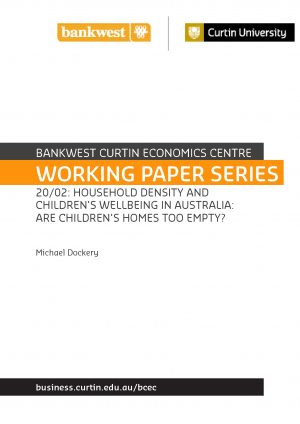Household density and children’s wellbeing in Australia: Are children’s homes too empty?
Living in crowded housing has been associated with poorer physical and mental health outcomes, with a greater emphasis on the psychological effects when the underlying quality of housing is high. Hence ‘overcrowding’ features as a housing condition extensively studied in housing economics.
This paper looks at physical health, mental health and cognitive outcomes for Australian children and adolescents conditional upon measures of occupant density of their family homes using three longitudinal datasets: the Household, Income and Labour Dynamics in Australia Survey; the Longitudinal Study of Australian Children; and the Longitudinal Study of Indigenous Children.
Overall, measures of occupant density – including some commonly used as measures of ‘crowding’ – are found to be positively associated with children’s wellbeing. It is argued that Australian children face a greater problem of homes being too empty, rather than too crowded, for optimal physical health and social and emotional development.
Surprisingly, the lack of evidence of negative effects of occupant density on health and socio-emotional wellbeing extends to Indigenous children who, on average, live in housing with markedly higher household density levels.
There is, however, some evidence of higher density detracting from educational outcomes for Indigenous children. The results should not be taken to dismiss problems of extreme household density levels experienced by some Australian children, and notably by Indigenous children, but do point to a need to reconsider what we call ‘crowding’ and how it is measured.




